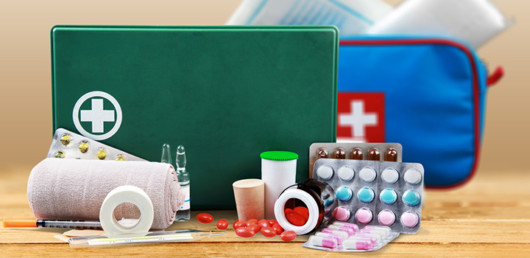You never know when you might have an emergency, so it’s always handy to have a comprehensive first aid kit nearby. Although many first aid kits come pre-packaged, there are always one or two essential items missing – it all depends on the user’s needs.
Even with a basic first aid kit, it is worth replenishing your stocks when items are running low. To avoid any disasters from occurring, keep reading and find out the five types of supplies that every first aid kit needs.
Bandages
Like wounds, bandages come in all shapes and sizes, so it’s important that you keep stocked up on an array of these convenient dressings. We recommend buying a few compress dressings, adhesive bandages, hydrofera blue dressings, butterfly bandages, liquid skin, and some triangular bandages. Don’t forget to include some adhesive tape to keep everything secure.
Over the Counter Medicine
A comprehensive first aid kit should also double as a mini-medical cabinet in case of any emergencies. We recommend stocking up on after-bite gel for those pesky insect stings, Advil in case of any throbbing headaches, and Benadryl to relieve any adverse symptoms of allergies. Other important medication you can stock up on includes Pepto Bismol, indigestion-relief tablets, and cough suppressants.
Speciality Tools
Many people remember to stock up on all kinds of medicines and bandages, but they often forget to include speciality tools in their first aid kit. You never know when you might have to remove a splinter or piece of glass from an open wound. So, consider including items like latex gloves, tweezers, stainless steel scissors, and a thermometer. Cotton buds and safety pins can also come in handy in a first aid kit.
Topical Products
In order to avoid the risk of infection, you will want to ensure that you sterilise everything before getting stuck in. There are tons of antibiotic, antimicrobial, antiseptic, and sterile wipes that can be used to kill bacteria, prevent infection, and sanitize hands before conducting first aid. It’s worth keeping a bottle of rubbing alcohol and iodine on hand, although these can also be purchased as small pads. Burn gel is another essential product that should be in your first aid kit.
Logistical Items
If you are planning on taking your first aid kit with you on holiday or even keeping it in your car, there are a few extra items you could include, for example, a small swiss army knife and flashlight. You can also create your own emergency contact list, with details of family medical conditions and the number of any personal physicians.
Having a first aid kit in your home or car is always a safe bet, however, if the injury or medical emergency looks serious, you should get an opinion from your nearest medic. You may be able to treat minor burns and wounds with your first aid kit, however, if the situation looks serious, it’s best to leave it to the professionals.
